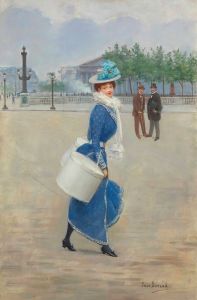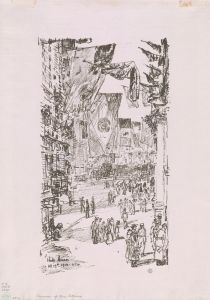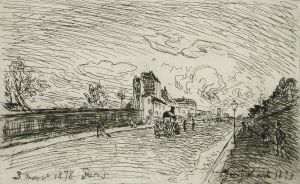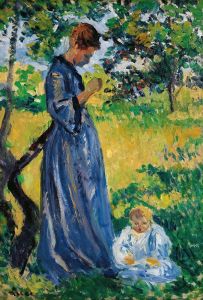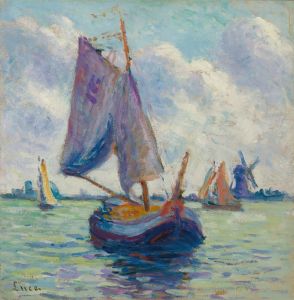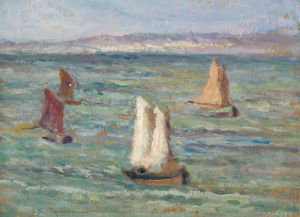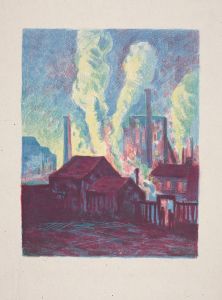
Paris, la place du Théâtre du Châtelet
A hand-painted replica of Maximilien Luce’s masterpiece Paris, la place du Théâtre du Châtelet, meticulously crafted by professional artists to capture the true essence of the original. Each piece is created with museum-quality canvas and rare mineral pigments, carefully painted by experienced artists with delicate brushstrokes and rich, layered colors to perfectly recreate the texture of the original artwork. Unlike machine-printed reproductions, this hand-painted version brings the painting to life, infused with the artist’s emotions and skill in every stroke. Whether for personal collection or home decoration, it instantly elevates the artistic atmosphere of any space.
Maximilien Luce's painting "Paris, la place du Théâtre du Châtelet" is a notable work by the French Neo-Impressionist artist, who was known for his contributions to the Pointillist movement. Born in 1858, Luce was a contemporary of Georges Seurat and Paul Signac, and he was deeply influenced by their techniques and the broader Impressionist movement. His works often depicted urban scenes, landscapes, and the everyday life of people, capturing the essence of late 19th and early 20th-century France.
"Paris, la place du Théâtre du Châtelet" is a vibrant representation of the bustling life in Paris, specifically focusing on the area around the Théâtre du Châtelet, a major theater located on the right bank of the Seine River. The theater itself was built in the 19th century and has been a significant cultural venue in Paris, hosting a variety of performances, including operas, concerts, and ballets. The painting captures the lively atmosphere of this iconic location, with its dynamic composition and meticulous attention to detail.
Luce employed the Pointillist technique in this painting, a method characterized by the application of small, distinct dots of color that are applied in patterns to form an image. This technique was pioneered by Georges Seurat and was a hallmark of the Neo-Impressionist movement. By using this method, Luce was able to create a sense of vibrancy and movement, effectively conveying the bustling energy of the Parisian streets.
The painting is notable for its use of light and color, which are central to the Impressionist and Neo-Impressionist styles. Luce's palette in this work includes a range of bright and muted tones, capturing the natural light of the city and the interplay of shadows and reflections. The careful placement of colors next to each other allows the viewer's eye to blend them optically, creating a more vivid and dynamic image.
Maximilien Luce was not only an artist but also an active participant in the social and political movements of his time. He was known for his anarchist views and his commitment to social justice, which often influenced his choice of subjects and the way he depicted them. In "Paris, la place du Théâtre du Châtelet," Luce's focus on an everyday urban scene can be seen as a reflection of his interest in the lives of ordinary people and the social dynamics of the city.
Throughout his career, Luce produced a significant body of work that included paintings, drawings, and prints. His contributions to the Neo-Impressionist movement have been recognized for their technical skill and their ability to capture the spirit of the age. "Paris, la place du Théâtre du Châtelet" remains an important example of his work, illustrating both his mastery of the Pointillist technique and his keen observation of urban life.
Today, Luce's works are held in various public and private collections around the world, and they continue to be studied and appreciated for their artistic and historical significance. "Paris, la place du Théâtre du Châtelet" is a testament to Luce's talent and his ability to capture the essence of Paris during a transformative period in its history.







